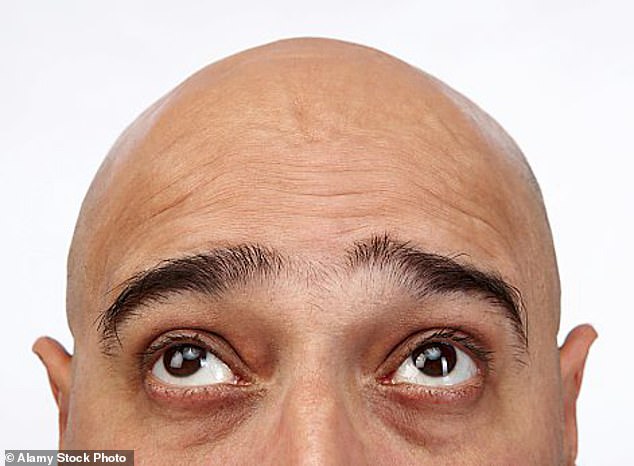What do the perfect man and woman look like?
According to AI, the answer is young, white, and very attractive.
Scientists from the University of Toronto asked three artificial intelligence bots to create images of ideal female and male bodies.
The ultimate woman is facially attractive, young, blonde and wears ‘revealing clothing’, according to the results.
Meanwhile, the ultimate man is shirtless, has black hair, and is ‘hyper–muscular’.
‘In a systematic coding of 300 AI–generated images, we found that AI reinforces the fit ideal,’ said Dr Delaney Thibodeau, lead author of the study.
The results also revealed a clear lack of diversity, with most images showing white people – and none depicting visible disabilities.
‘Racial and age diversity were minimal,’ Dr Thibodeau added.

What do the perfect man and woman look like? According to AI , the answer is young, white, and very attractive
Ideas about the ‘perfect’ body have changed hugely through the years.
For example, in the 1950s, weight gain tablets hit the shelves as women aspired to look like Marilyn Monroe and Elizabeth Taylor, while the 90s saw ladies lusting after a thin, androgynous look dubbed ‘heroin chic’.
In their new study, the team set out to understand what AI now considers the ideal male and female body.
Three different AI platforms – Midjourney, DALL–E, and Stable Diffusion – were asked to create images of female and male bodies, including those of athletes.
In total, 300 images were generated – 120 of men, 120 of women, and 60 of athletes.
An analysis of the images revealed several key trends.
Most (66.7 per cent of male images and 62.5 per cent of female images) depicted white people, while nearly all showed a young person.
The women were most likely to have blonde hair and the men to have black hair.

The women were most likely to have blonde hair and the men to have black hair. ‘Male adults in the images were never bald,’ the researchers explained in their study, published in Psychology of Popular Media (stock image)
The ideal woman, according to AI
- White
- Young
- Blonde hair
- Low body fat
- No cellulite or fat rolls
- Wearing a bikini
The ideal man, according to AI
- White
- Young
- Black hair (never bald)
- Low body fat
- Muscular
- Topless
‘Male adults in the images were never bald,’ the researchers explained in their study, published in Psychology of Popular Media.
Both the men and women had low body fat – while none had visible cellulite or rolls of fat.
In terms of clothes, there weren’t many of them.
‘Female images were more often dressed in bathing suits and revealing apparel, while male images appeared shirtless more frequently,’ the researchers added.
Overall, the findings show that AI platforms ‘overwhelmingly reproduce and amplify narrow western body ideals’, according to the team.
‘Our findings underscore the need to investigate how emerging technologies replicate and amplify existing body ideals and exclusionary norms,’ said Professor Catherine Sabiston, co-author of the study.
‘A human-centred approach – one that is informed by considerations of factors such as gender, race, disability and age – would be advisable when designing AI algorithms.
‘Otherwise, we continue to perpetuate harmful, inflexible and rigid imagery of what athletes should look like.’
HOW HAVE IDEAS ABOUT THE ‘PERFECT’ FEMALE BODY CHANGED?
Perceptions of the ideal female body can be linked to representations of women in media, whether found in pop culture, fashion or even politics.
These images of feminine attractiveness have changed significantly over the years.
1910 The Gibson Girl – An image produced by American graphic artist Charles Dana Gibson depicted the ideal female figure as tall and regal with an S-curve torso shape
1920 The Flapper – Cultural change sparked by the suffragette movement gave birth to short hair, knee length dresses and a more rambunctious, yet petite, view of female beauty
1950 The Hourglass – Voluptuous curves became important following the end of WWII, which also saw the creation of one of the most influential female bodies, Barbie
1960 The Twig – British cultural icon and model Twiggy brought forward an androgynous look in female ideals where small breasts and thinness were key
1990 Heroin Chic – Supermodels like Kate Moss bring their thin grunge looks to the runway
Today – Muscular and toned bodies are preferred over slim figures